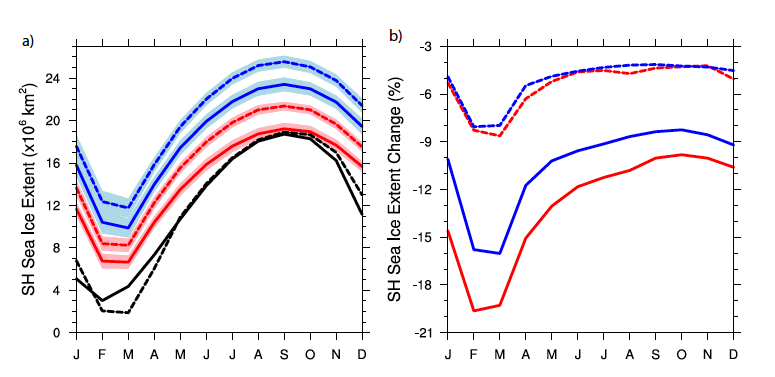Using WACCM to investigate the influence of stratospheric ozone loss on trends in sea ice
The NCAR CESM system is facilitating the investigation of the interactions among different components of the earth-atmospheric system. One of the available atmospheric models is WACCM, which was specifically developed to simulate interactions between chemistry and climate across all levels of the atmosphere. WACCM simulations are particularly valuable in exploring the impact of middle atmosphere dynamics and chemistry on the climate system. Here we compare multiyear simulations of recent decades using WACCM to similar simulations using CCSM4, which has a less interactive stratosphere because its upper boundary is lower and it does not include interactive ozone chemistry. The differences are not limited to the stratosphere but instead extend through the climate system. The high southern latitudes are particular example because of the radiative and dynamical impact of the seasonal Antarctic ozone hole. The comparisons, shown in the figure, indicate that the extent of sea ice around Antarctica is lower in the WACCM simulations. In panel b, it is evident that the magnitude of trend in ice extent simulated by WACCM has been substantially stronger in the years since the onset of the Antarctic ozone hole.

Figure (a) Annual cycle of Antarctic sea ice extent (106 km2) for WACCM averaged between 1979-2005 (solid red line) and pre-industrial (dashed red line). Shading indicates sample variance. CCSM4 1979-2005 (solid blue line), pre-industrial (dashed blue line) and two estimates of the observed sea ice extent for 1979-2005 (black lines) from Landrum et al. (2012). (b) Relative percentage change in sea ice extent from pre-industrial conditions to 1979-2005 (solid lines) and pre-industrial conditions to 1960-1979 (dashed), for ensemble means of WACCM (red) and CCSM4 (blue) simulations.
